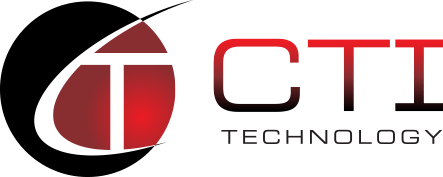Cyber Security Awareness Month Is At The Halfway Point: Key Lessons Learned
October marks Cybersecurity Awareness Month, a crucial time for individuals and organizations to focus on strengthening their digital defenses. As we reach the midpoint of this important month, it’s an opportune moment to reflect on the lessons learned and the progress made in safeguarding our online presence.
The theme for Cybersecurity Awareness Month 2024 is “Secure Our World,” emphasizing the importance of everyone taking simple steps to protect themselves, their families, and their businesses from online threats. This initiative, launched in 2023, aims to empower individuals with practical knowledge to enhance their cybersecurity posture.
Have you enabled multi-factor authentication on your accounts? Are you more vigilant about identifying phishing attempts? Perhaps you’ve learned new techniques for detecting deep fakes or protecting your digital identity. These are just a few examples of the valuable skills you may have acquired or reinforced during the first half of this month.
Key Takeaways
- Implement simple yet effective measures to protect your digital presence
- Stay informed about emerging cyber threats and trends
- Continuously educate yourself and others on best cybersecurity practices
Understanding Cyber Security Awareness Month
Cyber Security Awareness Month is a crucial initiative to educate and empower individuals and organizations to protect themselves online. It focuses on providing practical tools and resources to enhance digital security.
Significance of Cyber Security Awareness Month
Cyber Security Awareness Month, observed annually in October, promotes digital safety. It raises awareness about online threats and provides guidance on best practices to mitigate risks.
The event brings together government agencies, businesses, and individuals to address cybersecurity challenges collectively. Participating allows you access to valuable information that can help safeguard your personal and professional digital assets.
This month-long campaign highlights the importance of cybersecurity in our increasingly connected world and encourages you to take proactive steps to protect your digital identity and sensitive information.
Goals and Objectives
The primary goal of Cyber Security Awareness Month is to empower everyone to understand simple ways to protect themselves and their organizations from online threats. It aims to create a more secure digital environment for all users.
Key objectives include:
- Educating the public about current cybersecurity threats
- Providing practical tips for enhancing online safety
- Promoting the adoption of strong security practices
The campaign strives to make cybersecurity accessible to everyone, regardless of technical expertise. It emphasizes that small actions can significantly improve your digital security posture.
Participating teaches you how to identify potential risks and implement effective countermeasures. This knowledge helps you become more resilient against cyber attacks in your personal and professional life.


Personal Cyber Security Enhancements
Strengthening your online defenses is crucial in today’s digital landscape. By focusing on robust password practices and adding extra layers of security, you can significantly reduce your vulnerability to cyber threats.
Password Management Best Practices
Create strong, unique passwords for each of your accounts. Use a combination of uppercase and lowercase letters, numbers, and symbols. Aim for a password that is at least 12 characters long.
Consider using a passphrase instead of a single word. For example, “ILovePizzaWith3xtraCheese!” is more secure and easier to remember than a random string of characters.
Avoid using personal information in your passwords, such as birthdates or family names. Hackers can easily guess these.
Utilize a reputable password manager to generate and store complex passwords securely. This eliminates the need to remember multiple passwords and reduces the temptation to reuse them across accounts.
Update your passwords regularly, especially for critical accounts like email and banking. Set reminders to change them every 3-6 months.
Implementing Multi-Factor Authentication
Enable multi-factor authentication (MFA) on all accounts that offer this feature. MFA adds an extra layer of security by requiring a second form of verification beyond your password.
Common MFA methods include:
- SMS or email codes
- Authenticator apps
- Biometrics (fingerprint or facial recognition)
- Hardware tokens
Choose the MFA option that fits your needs and is most convenient for you to use consistently. Authenticator apps are generally more secure than SMS codes.
Be cautious of phishing attempts that trick you into revealing your MFA codes. Legitimate services will never ask for your full code via email or text.
Regularly review and update your MFA settings. If you change phone numbers or email addresses, update these in your account security settings.
Organizational Cyber Hygiene
Effective organizational cyber hygiene involves both employee education and policy implementation. These strategies work together to create a robust defense against cyber threats.
Employee Training and Engagement
Regular training sessions are crucial for keeping staff updated on the latest cybersecurity practices. You should implement interactive workshops that cover topics like identifying phishing emails and creating strong passwords. Consider using simulated phishing attacks to test employee awareness.
Gamification can increase engagement in cybersecurity training. Create competitions or reward programs for employees who consistently follow best practices. This approach makes learning fun and memorable.
Encourage a culture of cyber awareness by sharing real-world examples of security breaches. Use these incidents as learning opportunities to demonstrate the importance of vigilance.
Policy Updates and Compliance
Your cybersecurity policies need regular reviews and updates to address emerging threats. Establish a schedule for policy assessments, ideally quarterly or bi-annually.
Ensure all employees understand and comply with these policies. Create clear, concise guidelines that are easily accessible. Consider using infographics or short videos to explain complex security concepts.
Implement a robust access control system. Regularly audit user permissions and revoke unnecessary access. This practice limits potential damage from compromised accounts.
Establish protocols for reporting suspicious activities. Create a simple, anonymous reporting system to encourage employees to flag potential security risks without fear of repercussions.
New Threats and Trends
Cybersecurity threats are evolving rapidly, with attackers employing sophisticated techniques to exploit vulnerabilities. Cybercriminals adapt their strategies as defenses improve, creating a constant cat-and-mouse game in the digital realm.
Rising Cyber Threats
Phishing attacks have become increasingly convincing, making distinguishing legitimate communications from fraudulent ones harder. Cyberattackers now impersonate Microsoft support or bank fraud detection services with alarming accuracy.
AI-powered attacks are on the rise. These attacks utilize machine learning to create more targeted and personalized phishing attempts. These attacks can mimic writing styles and contextual information, making them difficult to detect.
Ransomware continues to pose a significant threat, with attackers targeting critical infrastructure and healthcare organizations. The ransom demands have escalated, and threat actors often steal data before encrypting it, adding another layer of extortion.
Evolving Defense Mechanisms
To counter these threats, cybersecurity professionals are developing innovative defense strategies. Multi-factor authentication (MFA) is becoming more widespread, with biometric options like facial recognition and fingerprint scans gaining popularity.
More organizations are adopting zero-trust architecture, which assumes no user or device is trustworthy by default. This approach requires continuous verification for all access requests, significantly reducing the risk of unauthorized access.
AI and machine learning are also being leveraged for defense, helping to detect anomalies and potential threats in real time. These technologies can analyze vast amounts of data to identify patterns indicating a cyberattack in progress.
Automated patch management systems are becoming more sophisticated, addressing vulnerabilities quickly and efficiently to minimize potential attack vectors.
Technology and Tools
Cybersecurity technology continues to evolve rapidly, offering new ways to protect digital assets. AI and machine learning are transforming threat detection and response capabilities for organizations of all sizes.
Innovative Cyber Security Solutions
Multi-factor authentication (MFA) has become a critical defense against unauthorized access. Biometric factors like fingerprints or facial recognition can now be used alongside traditional passwords. Passwordless authentication is gaining traction, replacing passwords with more secure methods.
Zero trust architecture treats all network traffic as potentially malicious. This approach requires verification for every user and device before granting access to resources. You may need to implement microsegmentation to isolate workloads and limit lateral movement within networks.
Secure access service edge (SASE) combines network security functions with WAN capabilities. This cloud-based model allows you to apply consistent security policies across distributed workforces and branch offices.
Utilizing AI and Machine Learning
AI-powered security tools can analyze vast amounts of data to detect real-time anomalies and potential threats. You can leverage machine learning algorithms to identify patterns and predict future attacks based on historical data.
Natural language processing helps filter out phishing emails and other social engineering attempts. AI can also automate routine security tasks, allowing your team to focus on more complex issues.
Threat intelligence platforms use AI to gather and analyze data from multiple sources. This provides you with actionable insights to proactively defend against emerging threats. You can also employ AI-driven security orchestration and automated response (SOAR) tools to streamline incident response processes.
Protecting Against Specific Cyber Crimes
Effective defense strategies are crucial for safeguarding against prevalent cyber threats. By implementing targeted measures, you can significantly reduce your vulnerability to malicious actors and protect your digital assets.
Phishing and Social Engineering Defense Strategies
To protect yourself against phishing and social engineering attacks, remain vigilant when interacting with emails, messages, and websites. Verify sender identities before responding to requests for sensitive information.
Enable multi-factor authentication on your accounts to add an extra layer of security. Be cautious of unsolicited communications, especially those creating a sense of urgency.
Educate yourself on common tactics used by cybercriminals. Look for red flags such as spelling errors, suspicious links, or requests for personal data.
Use email filters and security software to help identify potential threats. When in doubt, contact the purported sender through a known, trusted channel to verify the request’s legitimacy.
Ransomware Attack Prevention
To prevent ransomware attacks, maintain up-to-date backups of your important data. Store these backups offline or on a separate network to ensure they remain unaffected if your main system is compromised.
Update your operating systems, software, and applications regularly to patch known vulnerabilities. Use strong, unique passwords for all your accounts, and consider a password manager to help maintain them.
Implement robust network security measures, including firewalls and intrusion detection systems. Be cautious when opening email attachments or downloading files, especially from unknown sources.
Restrict user privileges on your devices and networks to limit potential damage. Consider using application whitelisting to prevent unauthorized software from running on your systems.
Future of Cyber Security
Technological advancements and global cooperation are shaping the landscape of cybersecurity. These developments aim to enhance protection against evolving threats while fostering international partnerships to combat cybercrime effectively.
Predictive Security Measures
Artificial intelligence and machine learning are revolutionizing cybersecurity. These technologies enable systems to anticipate and prevent attacks before they occur. You’ll see more adaptive security protocols that learn from past incidents to fortify defenses.
Quantum computing is on the horizon, promising unbreakable encryption methods. This breakthrough could render current hacking techniques obsolete, significantly enhancing data protection.
Behavioral analytics will play a crucial role in identifying insider threats. Organizations can detect anomalies that indicate compromised accounts or malicious intent by analyzing user patterns.
Role of International Collaboration
Global cyber threats necessitate a unified approach. You’ll witness increased cooperation between nations to share threat intelligence and best practices.
International cybersecurity standards are being developed to ensure consistent protection across borders. These guidelines will help organizations align their security measures with global benchmarks.
Joint task forces are becoming more common to combat transnational cybercrime. Law enforcement agencies are working together to track and apprehend cybercriminals across jurisdictions.
Public-private partnerships will strengthen cyber defenses. Governments and corporations will collaborate more closely to protect critical infrastructure and respond to large-scale cyber incidents.
Staying Informed and Proactive
Staying informed about cybersecurity threats is crucial for protecting yourself online. Cybersecurity Awareness Month emphasizes the importance of being proactive in your digital safety.
To stay up-to-date, regularly check reputable cybersecurity news sources and government websites. The Cybersecurity and Infrastructure Security Agency (CISA) provides valuable resources and alerts about current threats.
Set up automatic updates for your devices and software. This ensures you have the latest security patches to protect against newly discovered vulnerabilities.
Be cautious with your personal information online. Use strong, unique passwords for each account and enable two-factor authentication whenever possible.
Educate yourself on common cyber threats, such as phishing, malware, and social engineering. Knowing how to recognize these tactics can help you avoid falling victim to them.
Consider using a password manager to securely store and generate complex passwords. This makes maintaining strong, unique passwords easier across all your accounts.
Regularly back up your important data to a secure, external location. This protects your information in case of ransomware attacks or device failures.
By staying informed and taking proactive steps, you can significantly enhance your cybersecurity posture and protect yourself from online threats.
Review and Reflection
Take a moment to evaluate your cybersecurity knowledge and plan your next steps. Reflect on the lessons learned and consider how to apply them effectively.
Assessing Cyber Security Growth
Look back at your cybersecurity practices from the start of the month. Have you implemented stronger passwords? Perhaps you’ve enabled multi-factor authentication on more accounts. Consider the new threats you’ve learned about and how you’ve adjusted your online behavior.
Make a list of the security measures you’ve adopted. Have you become more cautious about clicking links in emails? Are you more aware of phishing attempts? Evaluate your progress in recognizing potential cyber threats.
Think about areas where you still feel uncertain. Identify gaps in your knowledge that need attention. This self-assessment helps pinpoint where to focus your efforts moving forward.
Action Plans Moving Forward
Create a concrete plan to address your cybersecurity weak spots. Set specific, achievable goals for Cybersecurity Awareness Month and beyond. For example, commit to updating all your software by a certain date.
If you haven’t already, consider adopting a password manager. Plan to review your social media privacy settings. Schedule regular backups of your important data.
Research additional resources to continue your cybersecurity education. Look for webinars, online courses, or local workshops. Stay informed about emerging threats by following reputable cybersecurity news sources.
Remember, cybersecurity is an ongoing process. Regularly reviewing and adapting your practices are key to maintaining a strong defense against digital threats.
Why Is CTI Technology The Best Choice For IT Services In The Chicagoland Region?






















